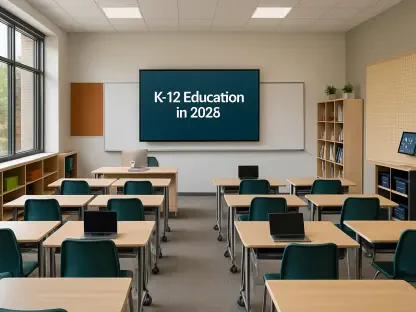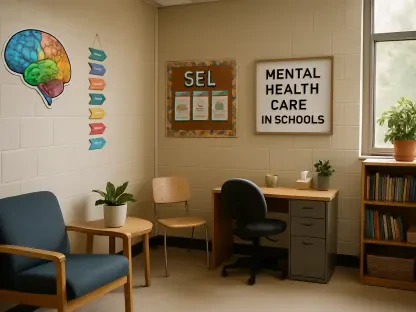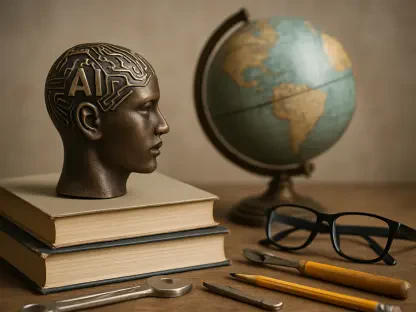In a world where digital connectivity signifies opportunity and growth, a staggering 3.1 billion people still suffer from digital poverty. This lack of access to technology has far-reaching implications, particularly in the sphere of education, where the absence of digital infrastructure can severely limit the potential for learning and development. The N50 Project, spearheaded by Daniel Gutwein, seeks to address this gap by introducing SMART Boards to remote classrooms around the globe. These interactive whiteboards aim to create immersive, enriched learning environments that bridge the digital divide, offering new avenues for educational engagement to underserved communities, such as those in rural Kenya. By leveraging digital tools, the initiative proposes a solution that empowers both educators and students, ultimately fostering a more inclusive global educational landscape.
The Role of SMART Boards in Enhancing Education
Transforming Traditional Classrooms with Innovative Technology
SMART Boards are reshaping the educational landscape by transforming traditional classrooms into hubs of interactive learning. These digital boards go beyond mere projection tools—they enable real-time interaction between students and educational content. By integrating multimedia resources, such as videos, animations, and interactive simulations, SMART Boards facilitate a more engaging and dynamic learning environment. This hands-on approach not only captures students’ attention but also enhances their understanding and retention of complex concepts, which traditional teaching methods may fail to achieve.
The interactive capabilities of SMART Boards also promote collaborative learning, encouraging students to work together to solve problems and explore new ideas. This form of participatory education mirrors real-world scenarios, preparing students for the collaborative and technology-driven workplaces of the future. As students become more engaged, educators can harness this opportunity to innovate their teaching methods, adapting them to meet the diverse needs of learners and to cultivate an environment where every student has the opportunity to excel.
Addressing the Learning Needs of Underserved Regions
In regions where digital access is limited, the introduction of SMART Boards can revolutionize education by providing unprecedented access to quality learning resources. For many schools in rural areas, educational materials are scarce, and opportunities to interact with cutting-edge technology are almost non-existent. By equipping classrooms with SMART Boards, educators in these areas can access a wealth of global knowledge and digital content that previously lay beyond their reach. This transformation can level the playing field, giving students in underserved regions a chance to compete on equal footing with their peers from more technologically advanced areas.
Moreover, the deployment of SMART Boards can spur a new wave of interest in education among students who may have previously been disengaged. As lessons are enriched with digital content and interactive experiences, students become more enthusiastic about learning, often sparking curiosity and fostering a love for education. This newfound interest can have a ripple effect, encouraging improved attendance and participation rates, which are fundamental to breaking the cycle of digital poverty and opening up new pathways for future success.
Paving the Way for Global Educational Equity
Leveraging Technology for Inclusive Learning
The integration of SMART Boards in global classrooms is more than just a technological upgrade; it represents a significant step toward educational equity. These tools are a tangible representation of how technology can be leveraged to provide inclusive learning opportunities for all students, regardless of their geographical or socioeconomic background. By providing access to the same digital resources, students across the globe can experience a standardized level of education, which is crucial in the fight against digital and educational inequities.
The push for digital equity has sparked collaborations among governments, non-profits, and private entities, each contributing to a larger vision of universal quality education. Such partnerships are pivotal in realizing the potential of SMART Boards in breaking down barriers to digital access. Furthermore, by equipping educators with the necessary training and support to effectively use these tools, the impact on the learning process becomes even more profound. Teachers can customize content to align with their students’ needs, fostering a personalized learning journey that can significantly enhance educational outcomes.
Overcoming Challenges and Setting Future Goals
While SMART Boards represent a promising solution, the journey to digital equity is fraught with challenges. Infrastructure limitations, funding constraints, and resistance to change are just a few obstacles that must be overcome to successfully implement these tools worldwide. Ensuring that educators receive ongoing support and professional development is crucial in harnessing the full potential of SMART Boards, allowing them to seamlessly integrate technology into their curriculums.
Looking forward, it is imperative to continue pushing for policies and practices that prioritize digital accessibility and inclusivity. By setting ambitious yet achievable goals, such as expanding the reach of technology to more remote areas, stakeholders can drive significant advancements in global education. The widespread adoption of SMART Boards and similar technologies can ultimately transform the educational landscape, enabling students from all corners of the world to realize their potential and contribute meaningfully to a digitally interconnected society.
Reflecting on Progress and Future Impact
SMART Boards are revolutionizing education by transforming traditional classrooms into interactive learning centers. These high-tech boards are more than just projection screens; they allow real-time interaction between students and content. By incorporating multimedia assets like videos, animations, and simulations, SMART Boards create a highly dynamic and engaging learning environment. This hands-on method grabs students’ attention and improves their comprehension and retention of complicated ideas, often surpassing the effectiveness of conventional teaching techniques.
The interactive nature of SMART Boards also fosters collaborative learning, motivating students to cooperate in problem-solving and idea exploration. This active form of education mirrors real-world situations, equipping students for future workplaces that rely on teamwork and technology. As student engagement rises, educators have a chance to innovate their teaching, tailoring it to diverse needs and creating a learning environment where every student can thrive and succeed, thereby modernizing educational processes and outcomes.









